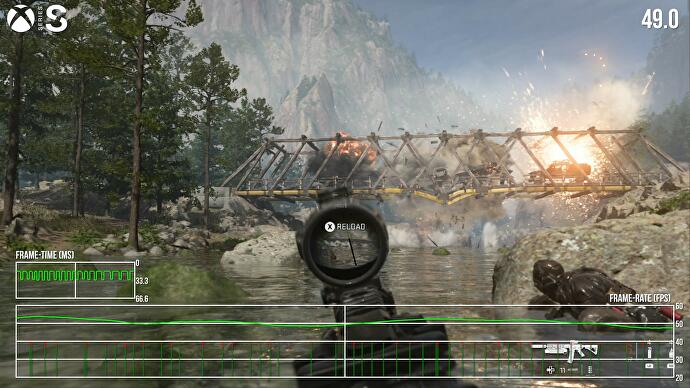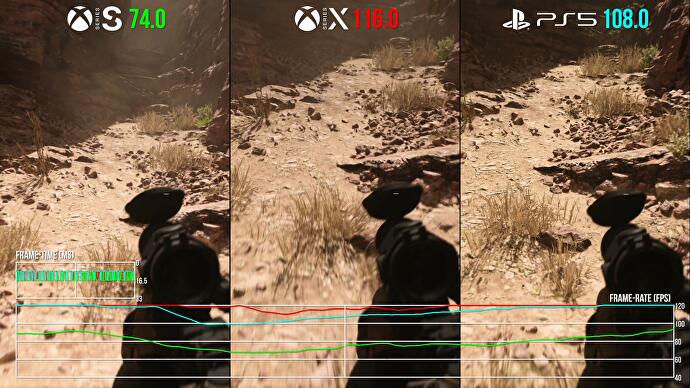Modern Warfare 2 flexes its muscles: Not only the photorealistic Amsterdam inspires

Every few years, the Call of Duty series reaches a new technical milestone. It’s a definable moment where developers like Infinity Ward make a clean break from its predecessor. The 2019 Modern Warfare reboot was just that. The IW8 engine delivered a huge boost in geometry, a new lighting model, updated physics, materials, and a streaming system for large-scale maps. It was a breakthrough for the series, continued in last year’s Vanguard and further enhanced for the new Modern Warfare 2. Now dubbed IW9, the Infinity Ward-developed engine features a wealth of improvements, including stunning character rendering, improved water simulation, and AI upgrades. However, it’s the beautiful replica of Amsterdam that has grabbed the headlines – and rightly so.
The story of Modern Warfare 2 allows the IW9 engine to showcase its strengths brilliantly. Each mission is truly a showcase, showcasing each of the new visual tricks in a way the multiplayer modes can’t. Each setting increases in level: from shootouts while standing on your head to jumping between exploding cars, from dodging containers on a rocking tanker to swimming in Amsterdam’s canals at night – the variety is enormous.
A big highlight is the “Recon By Fire” mission, in which we see how the IW9 technology renders a huge, sprawling, foggy, green landscape. She plays to her strengths perfectly. Any linearity is thrown overboard in favor of a more open design. You can choose dialogues, decide which points you want to attack first. And you decide how you do it: secretly or wildly firing around you. It’s the classic Call of Duty 4 mission “All Ghillied Up” brought to a new generation, a brilliant reinvention with multiple ways to tackle it. And while there are a few missions that aren’t quite as welcome – most notably the overhead fire in “Close Air” – these sections mostly hit the mark.
The most memorable mission – visually speaking – is the now legendary Amsterdam level. It’s a quiet story section, a moment of stillness between the game’s bombastic action. Strolling through the Red Light District, every little detail is taken from the real world: the cafe signs, the bikes flanking the canal, the street markings. Even the proportions of the brick streets, the arched bridge and the tower of the Old Church are precisely measured. While there are exceptions, the Infinity Ward team uses photogrammetry to capture most real-world materials – every brick, every restaurant sign – and transfer their properties into the game engine. This information feeds into the lighting engine and plays a big part in delivering realistic results.
Perhaps even more remarkable is the sheer accuracy of the scale of this Amsterdam level. The depiction of the Amsterdam streets in MW2 feels like such a direct translation of reality that it’s even possible to compare the two – on a 1:1 scale – and that’s a main focus in the video embedded above (and many thanks to Melhi Korkmaz for providing the material from Amsterdam). Yes, there are obvious differences: NPCs are still far from capturing human behavior effectively, while the screen-space reflections are too artifact-prone to capture the way the light actually reflects off rain-soaked brickwork. Infinity Ward is still in cross-gen territory here, not even the PC version benefits from the ray-traced reflections that would increase the level of realism by so much.

Beyond Amsterdam, the early mission “Wetwork” showcases IW9’s new water technology, where you can dive into a simulated body of water and use it as a form of stealth to take out guards. The waves and caustics of the water hitting the bay are well-reacted and in later missions you can even shoot guards while swimming downstream in a wild section. But again, SSR is very present on console, with all the expected artifacts in the reflections.
Comparisons between the big three consoles – PS5, Series X and S – are more of a footnote at this point. Modern Warfare 2’s engine setup sticks to dynamic 4K on the PS5 and Series X, with rare dips in pixel count below the top-end target. Visually, there are otherwise no differences between the two premium consoles, so it’s a direct match. There’s dynamic 1440p on the Series S, with the pixel count dropping to 2250×1440, like the usual scaling on the horizontal axis only. When comparing the Junior Xbox to the Series X, there are only minor changes in settings that affect grass density and shadow quality. While all three are very robust from a visual point of view, the more powerful devices offer more stability and better image quality.
The PS5 and Series X versions both hit a rock-solid 60 frames per second in standard 60Hz mode. Only part of a particular mission (collapsing a bridge) caused problems on one playthrough on Series X, ran fine on second playthrough on Microsoft hardware, and had no problems at all on PS5. The Series S is also doing well in general, although the collapsing bridge does see a dip to 50fps, accompanied by tearing across the top of the screen. The Series S is less stable overall and shows almost constant tearing at the beginning of the wetwork mission, for example. Performance is still very good on the entry-level Xbox, and you can easily play through the campaign this way. The only other notable difference in terms of performance is that the PS5 is fully v-synced, meaning there is no tearing at all.

The optional 120Hz mode allows for up to 120fps performance, as you’d expect, but may be more suited to users of a VRR screen. A clean 120fps display is rare across all consoles and is limited to simpler internal areas, while larger, more demanding levels tend to run at 80fps on the PS5 and Xbox Series X. Microsoft’s powerful console runs at a marginal edge over the PS5 in most scenes – at around 5fps overall – although there are points where they swap lead positions. The Series S offers limited benefits in this mode and typically runs 30 to 40 fps slower than its more powerful counterpart.
Overall, the technical advances in Modern Warfare 2 are perhaps less revolutionary than in the first 2019 reboot. “Iterative” is a fair description, much like the advances in Call of Duty Vanguard, although there are some clear highlights here. Amsterdam is a welcome change in terms of pacing, it’s a slower moment that allows the player to absorb Infinity Ward’s technical prowess.
That’s all the more impressive considering Modern Warfare 2 was designed from the ground up to run well on the PlayStation 4. So I’m curious to see how the last-gen versions will fare, first impressions point to a noticeable drop in details and a significantly less stable frame rate. It seems to be working though, which makes me think: if Infinity Ward can deliver such a good-looking cross-gen game, a new COD aimed solely at modern hardware is an absolutely tempting proposition. I hope we see that in the next big part of the series.
![]()
Originally written by Thomas Morgan, Senior Staff Writer, Digital Foundry
Reference-www.eurogamer.de